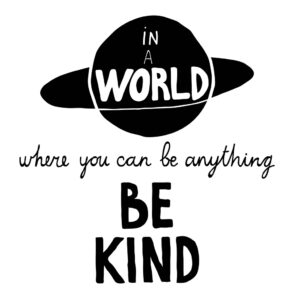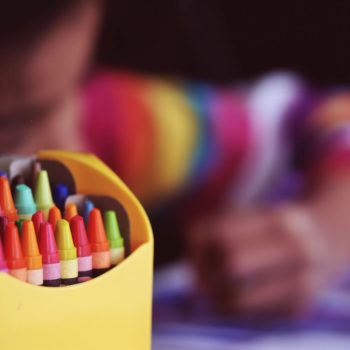By: Tanya Kramer
In light of Women’s History Month, it seems like a good time to reflect on prominent names of women who often get missed when discussing the history and evolution of therapy.
Below is not an exhaustive list, but it will expand your knowledge of women who have or continue to directly impact the counseling world. You will find a brief description of their impact and you can learn more about each one by doing your own research or by clicking on the links at the end of this list.
- Mary Ainsworth – demonstrated the importance of healthy childhood attachments, created the “Strange Situation” assessment, and increased understanding around attachment styles.
- Eleanor Maccoby – focused on developmental psychology, pioneered the psychology of gender roles.
- Anna Freud – influenced Erik Erikson’s work, created the concept of defense mechanisms, and expanded the field of child psychology (yes, this is Sigmund Freud’s daughter)/
- Martha Bernal – first woman of Mexican descent to earn a doctoral degree in psychology (1962), researcher on how the mind and body interact, championed efforts to study Latino Psychology and mental health issues in minority populations.
- E. Kitch Childs – in 1969 she opened her practice to marginalized populations including the LGBTQIA+ community, people living with AIDS, etc., she researched Black women and how incorporating feminism into therapy could empower them.
- Jean Lau Chin – explored assumptions about gender and race, her work in leadership styles, diversity, and women’s issues influenced governmental policies regarding cultural competency.
- Jennifer Eberhart – studied how subliminal images trigger racial stereotypes and affect what people see, her work on understanding how people code and categorize others according to race has helped highlight stereotypes in policing and schools.
- Tsuruko Haraguchi – pioneered research on mental fatigue, first Japanese woman to receive a doctoral degree in any subject area.
- Ruth Howard – conducted groundbreaking child development research including a specific study called “A Study of the Development of Triplets” (included 229 sets of triplets including many ethnic groups) resulting in her career focusing on the underserved communities.
- Marigold Linton – cognitive psychology research focusing on how long the brain can retain information, first indigenous woman in the United States to receive a doctoral degree in psychology.
- Inez Prosser – her study called “The Nonacademic Development of Negro Children in Mixed and Segregated Schools” helped initiate discussion about school desegregation, one of the first Black women to earn a doctoral degree in psychology.
- Mary Whiton Calkins – navigated completing all doctorate requirements at Harvard but was refused a degree because she was a woman, developed the “paired-association” technique, she was the first female president of the American Psychological Association.
- Maria Root – researches trauma, eating disorders, multiracial identities, and feminist therapy, created the “Bill of Rights for Mixed Heritage” to affirm mixed race identity, she is a trailblazer in the study of multiracial individuals.
- Alberta Turner – a leading voice in the study of mental health disorders and juvenile delinquency, a civil rights activist who dedicated her career to implementing reforms in the criminal justice field.
- Leta Stetter Hollingworth – did research on intelligence, gifted children, and women, proving that women were as capable as men “regardless of what time of the month it is”.
- Karen Horney – refuted Freud’s ideas, brought increased attention on the psychology of women, and introduced the “theory of neurotic need” meaning people are able to take a personal role in their own mental health.
- Ursula Bellugi – pioneering researcher in language and the effects on the nervous system, demonstrated how American Sign Language (ALS) draws on many of the same areas of the brain as spoken language.
- Melanie Klein – contributions to the field of play therapy, discovered how children communicate through play.
- Mamie Phipps Clark – developed the “Clark Doll” test, researched racism’s impact on Black children, and played an important role in the famous 1954 Brown vs. Board of Education case.
- Florence Denmark – research on violence, prejudice, stereotyping, ethnicity, and gender earned her the role as the leading representative to the United Nations for the International Council of Psychologists and the APA, a founding member of the Association for Women in Psychology in 1969.
- Naomi Weisstein – her paper called “Psychology Constructs the Female” helped launch the meeting of feminism and academic psychology, a founding member of the Association for Women in Psychology in 1969.
- Bluma Zeigarnik – established the “Zeigarnik Effect” defined by how people have the tendency to remember information for unfinished tasks while erasing them from memory once the task is done.
- Margaret Floy Washburn – first woman to earn a PhD in psychology, made strides in the fields of animal cognition and motor theory.
- Marie Jahoda – trailblazer in the study of racial prejudice, positive mental health, and authoritarian personalities, studied the psychological impact of unemployment, she developed the theory of the “Ideal Mental Health”.
- Rosa Katz – co-wrote “Conversations with Children” which chronicled more than 150 conversations with children which provided a foundation for the psychology of learning
- Elizabeth Koppitz – wrote several books that influenced the psychoeducational assessment of children, involved in creation of the “Bender Gestalt Test for Young Children” and the “Psychological Evaluation of Children’s Human Figure Drawings” which are related to learning disabilities and exceptional education
- Virginia Satir – recognized for her approach to family therapy by pioneering the field of family reconstruction, created the “Virginia Satir Change Process Model.
- Kay Redfield Jamison – work centers on bipolar disorder, authored a number of books about mood disorders, suicide, mania, depression, named by Time Magazine as a “Hero of Medicine” as a clinical psychologist.
- Carol Gilligan – originator of “The Ethics of Care”, best known for her work on ethical community and ethical relationships, in 1996 she was named by Time as one of America’s top 25 most influential people.
- Francine Shapiro – originated and developed eye movement desensitization and reprocessing (EMDR) which is a form of psychotherapy for resolving the symptoms of traumatic and other disturbing life experiences.
- Julie Schwartz Gottman – co-founder of the Gottman Institute which is an organization dedicated to strengthening relationships through research based products and programs, co-creator of the “Sound Relationship House Theory”
- Jennifer Lynn Eberhardt – investigates and researches the psychological association between race and crime which reveals the extent to which racial imagery and judgments impact our culture and society, specifically in the domain of criminal justice.
Learn More About These Women:













